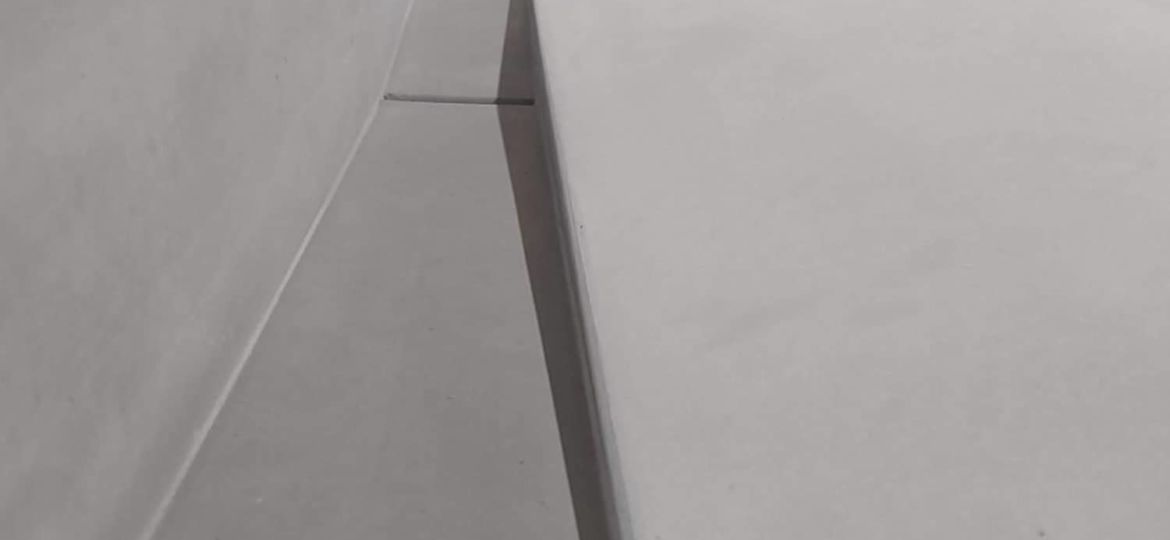
When making concrete sinks, the single most important thing to consider is the proper slope for sink basin. In order for the water to drain, it needs a slope that leads it where you want it to go.
When you’re planning your sink, it’s critical to plan out what style of drain you’ll be using, either a standard drain or a custom slot drain. Each style of drain creates its own challenges in mapping out how the water will flow into it.
A good rule of thumb that I learned from a plumber a while back is to plan at least 1/4″ per foot of slope toward the drain. If you have a 3 foot long sink with a drain at one end, you’ll want at least 3/4″ of slope toward it. If that same 3 foot long sink has a centered drain, you’ll want at least 3/8″ of slope from either end toward the center.
Potential Problems with Poorly Planned Concrete Sink Projects
There have been numerous videos I’ve seen in which the person making the concrete sink builds a basic box to create his/her sink form. This is going to create a couple problems that will affect the finished project:
- Flat-bottomed sink molds will be hard to remove once the concrete has set
- Water will pool up in the corners of your sink once installed
- Mold WILL grow in these pools of standing water
These are serious problems if you hope to have a finished product that functions and looks good. Let’s take a look at each in a little more depth.
De-molding a Poorly Designed Concrete Sink Mold
The first problem is one of getting the form out of the concrete when it has set up. If your sink mold doesn’t have enough draft, or even worse, if it has negative draft, it will be locked into the now hardened concrete. This is easier with a visual.
In this case, you get what we call Form Lock. When this happens, you have to basically destroy the mold you spent all that time creating in an effort to remove it. If you’re very careful, this can be done and the sink can be salvaged. If it’s really stuck, you might just have to start over again from scratch. Sometimes even a well designed sink can get stuck if you aren’t careful when you are glueing it down and making a silicone round over.
We’ve had sinks chip out and had to immediately set the forms up again. It’s extremely frustrating, so make sure to spend extra time and attention when glueing it down to ensure that there isn’t too large of a gap between the sink mold and the deck.
Water Won’t Drain in a Poorly Designed Concrete Sink
If you were able to get the mold out of the hardened concrete sink without damaging it too badly, the next problem you’ll face will be that the water doesn’t go toward the drain. Instead, it will puddle up in the corners of your newly installed sink.
I’ve seen a few commercial bathrooms with concrete sinks that look terrible after a short time, due to the fact that water just sits in the basin.
#concrete #beton #concretesink #tampa #channelsidetampa #handmadeinthebay

